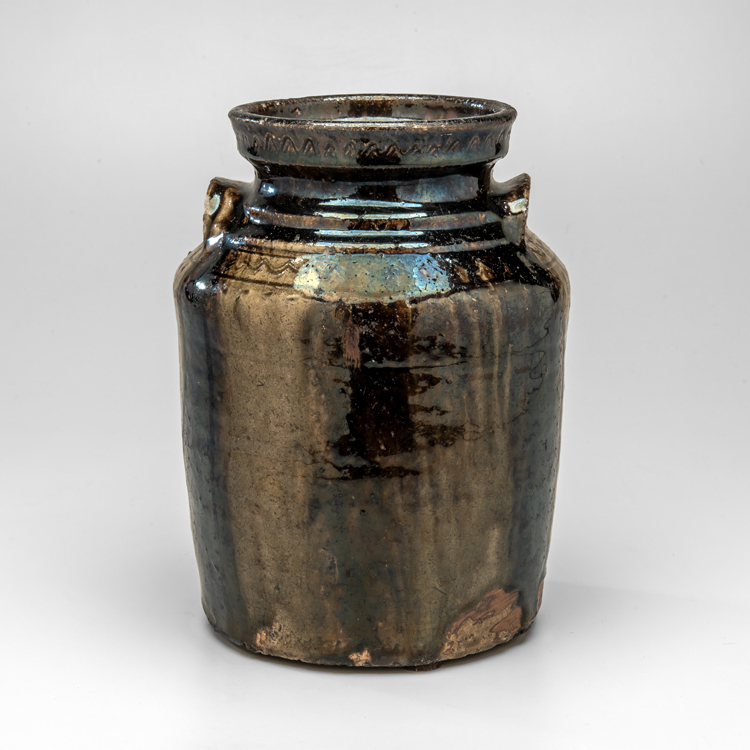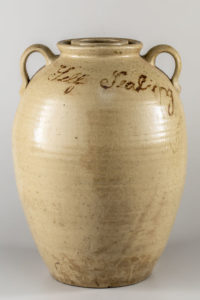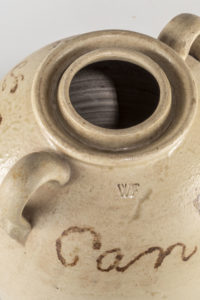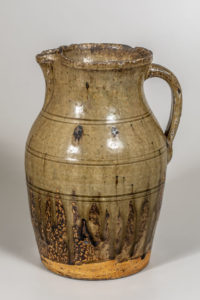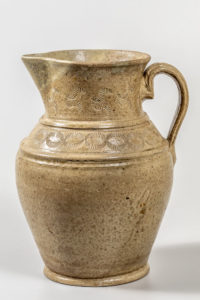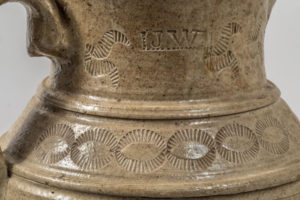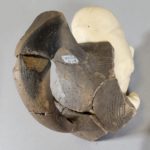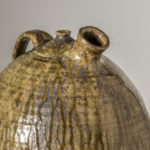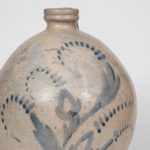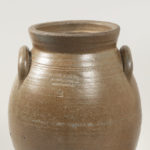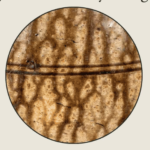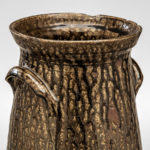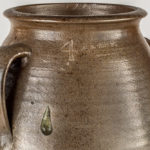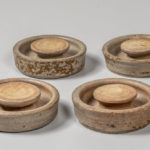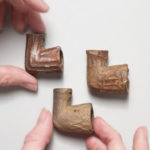Pots with an Alabama Accent
As the migration of potters and traditions played out across Alabama, some trends emerged. Although these decorative motifs and forms are not exclusively found in Alabama, they can be a clue to the potential Alabama origin of an object.
| Iron oxide decoration:
This jar, attributed to the shop of Elijah McPherson, features dramatic drips or flows of darker colors that seem to spring from each handle. These were created using the selective application of iron oxide to these areas, which naturally flowed down the vessel during firing. This jar also has “combed” sine wave incising around the shoulders, a trait that was carried by Randolph County potters to Sand Mountain, Alabama later in the 19th century. |
Jar, circa 1840-50, attributed to the shop of Elijah McPherson, possibly an enslaved potter, Randolph County, Alabama, stoneware with ash-based alkaline glaze, William C. and Susan S. Mariner Southern Ceramics Collection |
|
| Concentric bands:
The tall walls of the jar marked by James Williams have evenly spaced “rings” incised by the potter with a single or double pointed tool as the pot turned on the wheel. Note also the thick veins of alkaline glaze. |
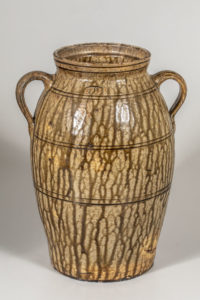
Jar, circa 1850, shop of James Williams, Elmore County, Alabama, stoneware with ash-based alkaline glaze, Collection of Ron Countryman and Joe Forbes |
|
| Iron wash:
Many of the Alabama makers came from the Edgefield, South Carolina area and continued some styles of decoration associated with this area, including application of iron oxide with a brush or even fingers to add patterns, text, or dates to a vessel.
|
Canning jar, circa 1860, possibly from the shop of William Gulledge Falkner or William Hilliard Falkner in the shop of Joel Falkner, Sterrett, Shelby County, Alabama, stoneware with lime-based alkaline glaze and iron wash decoration, Collection of Ron Countryman and Joe Forbes |
|
| Double-dipped glaze:
Alkaline glazes, unlike salt glazes, are physically applied, usually by dipping, to the surface of a ceramic object before they are fired. In this case, both a light green and dark green ash-based alkaline glaze were applied to give the final vessel a “two toned” appearance. Alkaline glazes can vary in color based on their composition.
|
Pitcher, circa 1850, Randolph County, Alabama, stoneware with “double dipped” ash-based alkaline glaze, Collection of Ron Countryman and Joe Forbes |
|
| Stamped or impressed decoration:
Both the James Williams pitcher and the bottle have extensive stamped decoration. The potter impressed shapes like the heart or the curving band into the unfired clay. Makers marks, like that of James Williams, were also sometimes stamped into the body of the object.
|
Pitcher, circa 1850, shop of James Williams, Perry County, Alabama, stoneware with lime-based alkaline glaze, Collection of Ron Countryman and Joe Forbes Bottle, circa 1830-40, attributed to the shop of James Williams or James Pinkney Shepherd, Randolph or Elmore County, Alabama, stoneware with lime-based alkaline glaze, William C. and Susan S. Mariner Southern Ceramics Collection |

